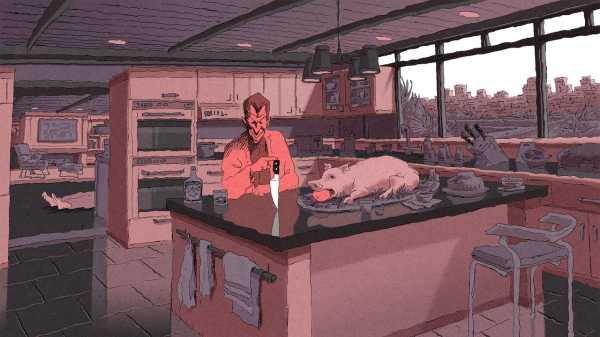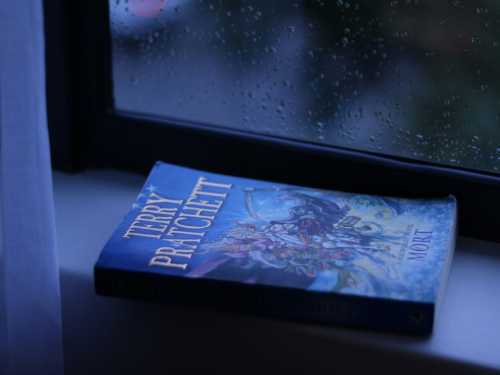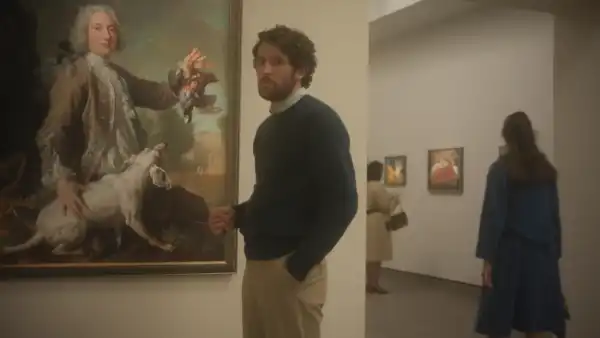
“Why do villains always live / In houses built by modernist masters?” Gabriel Kahane asks the pertinent question in “Villains (4616 Dundee Dr.),” a song from his 2014 album, “The Ambassador.” The address belongs to the Lovell Health House, in Los Feliz, Los Angeles, which the Austrian American architect Richard Neutra designed in the late nineteen-twenties, as a home for the health guru and newspaper columnist Philip Lovell. In the 1997 film “L.A. Confidential,” the Health House has fallen into the hands of a drug-dealing pimp-pornographer named Pierce Patchett, whose employees undergo plastic surgery so that they resemble movie stars. Patchett winds up dead in a chair in the living room, no longer benefitting from the restorative light that pours through Neutra’s south-facing ribbon windows.
Not every modernist house on film harbors a villain, nor does every villain dwell in one. Still, enough examples have accumulated to form a dependable cliché. Hjalmar Poelzig, the satanic architect in “The Black Cat,” from 1934, occupies an International Style fortress. Phillip Vandamm, the suave spy in Alfred Hitchcock’s “North by Northwest,” inhabits a cantilevered hideaway à la Frank Lloyd Wright. The Chemosphere, John Lautner’s octagonal watchtower in the Hollywood Hills, inspires a grisly murder plot in Brian De Palma’s “Body Double.” The same architect’s Garcia House is featured in “Lethal Weapon 2” as the headquarters of a heinous South African diplomat. Modernist homes have also accommodated a Palm Springs gangster (“The Damned Don’t Cry”), slick hoodlums (“The Night Holds Terror”), lethal gymnasts (“Diamonds Are Forever”), a drug-dealing record producer (“The Limey”), a super-rich serial killer (“The Girl with the Dragon Tattoo”), a pyromaniac artist-counterfeiter (“To Live and Die in L.A.”), and another porn mogul (“The Big Lebowski”).
The latest addition to the canon is “Don’t Worry Darling,” which makes lavish use of Neutra’s Kaufmann Desert House, in Palm Springs. The residence was built in 1946 for the department-store magnate Edgar J. Kaufmann, who had earlier commissioned Wright’s Fallingwater, in Pennsylvania. Two photographs made the house famous: a black-and-white shot, by Julius Shulman, in which the structure glows against a desert sunset; and a candy-colored shot, by Slim Aarons, with well-coiffed, cocktail-sipping women arrayed around the home’s pool. Side by side, the images trace an evolution in the cultural function of modernist architecture, from avant-garde utopianism to capitalist extravagance. Both photos are a bit too glisteningly perfect to be believed. The viewer readily concocts dark backstories.
At first, “Don’t Worry Darling” plays up the fantasy element, bringing Aarons’s photo to swanky life. The owner of the Kaufmann House is a guru C.E.O. named Frank (Chris Pine), who runs a secretive organization called the Victory Project. A square-jawed blend of Jordan Peterson and Elon Musk, Frank urges his minions to challenge convention, foster innovation, and change the world. This is the modernist quest reduced to Silicon Valley psychobabble. Appropriately enough, the movie degenerates into high-concept horror, dramatizing the gap between the dream of perfect order and the reality of human behavior. That gap haunted the architectural vanguard from the start, and helps to explain why these houses radiate sinister vibes on film.
Modernist malignity has long been a topic of discussion in architectural circles. Literature on the subject includes Chad Oppenheim and Andrea Gollin’s collection, “Lair: Radical Homes and Hideouts of Movie Villains,” from 2019, and Christine Madrid French’s “The Architecture of Suspense: The Built World in the Films of Alfred Hitchcock,” published earlier this year. The most influential analysis, and the most biting, comes from the filmmaker Thom Andersen, who has long lived in a house partly built by R. M. Schindler. In his 2003 documentary, “Los Angeles Plays Itself,” Andersen accuses Hollywood of besmirching the rich legacy of modernist residential architecture that can be seen all across Southern California. Schindler and Neutra’s “pure modern machines for better living” are cynically repurposed as “dens of vice.”
The demonization of mid-century modernism is of a piece with other long-standing tics of Hollywood populism. If villains aren’t pacing icily through a Lautner open-plan interior, they may be listening icily to classical music or gazing icily at an abstract canvas. Often, they speak in a vaguely Continental accent or possess a vaguely gay affect. Regular-dude heroes recoil from such un-American activity. Mel Gibson, in “Lethal Weapon 2,” goes so far as to destroy the Garcia House by pulling down one of its pylons with a cable tied to his manly pickup. As the structure collapses, Gibson jumps around with frat-boy glee. Andersen points out a basic dishonesty in the spectacle: Joel Silver, the movie’s producer, has owned and restored Wright homes. What’s fit for the culture-industry élite is deemed unfit for the hoi polloi.
The pattern goes deeper than Hollywood hypocrisy, however. Modern design already surfaces as a visual code in French and German films of the twenties. In Marcel L’Herbier’s arty sci-fi picture “L’Inhumaine,” an aristocratic diva and a necromantic engineer occupy Cubistic houses that were conceived by the architect Robert Mallet-Stevens. In Fritz Lang’s “Spies,” a criminal mastermind named Haghi plots from within an oppressively geometrical bank building. These variously exquisite and diabolical images mirror public ambivalence in the face of modernist styles and attendant technological change. They also mirror ambivalence in the face of cinema itself: both architects and directors exercise an uncanny sway over our perceptions. The late Jean-Luc Godard intermingled these themes deftly in his 1963 film “Contempt,” in which a vulgar Hollywood producer commandeers the brick-red, trapezoidal Casa Malaparte, on Capri. Lang is there, too, playing himself.
In many cases, such motifs arose from a personal enthusiasm on the part of the filmmakers. The fiend’s name in “The Black Cat” is a sly tribute to the German architect Hans Poelzig, who helped design sets for the horror classic “The Golem: How He Came Into the World.” (Edgar G. Ulmer, the director of “The Black Cat,” had got his start in German cinema.) Cedric Gibbons, the master of design at M-G-M, popularized Art Deco and moderne styles; his own house appears in “To Live and Die in L.A.,” among other movies. The camera is instinctively drawn, it seems, to clean, rectilinear lines. Big windows in steel frames double as screens in which the human drama plays out. Jacques Tati maximized that effect with his brilliant parodies of modern architecture in “Mon Oncle” and “Playtime.” In the latter, families in an apartment block watch television behind plate-glass windows—screens within screens within screens.
The trope of the International Style villain becomes deliciously self-referential in the case of the director Josef von Sternberg, who, in the early thirties, commissioned Neutra to build him a retreat in the San Fernando Valley. Neutra devised a sleek battleship of an abode delimited on one side by a curving aluminum wall and surrounded by moat-like waterways. Later, he spun implausible tales about his collaboration with the director. Although Sternberg was known to be eccentric and imperious, he almost certainly did not ask for an electrified moat that could eliminate intruders, nor for the removal of locks from bathroom doors so that deranged women would not kill themselves on the premises. In an ironic twist, the architect is himself spinning the kind of evildoer scenario that would become the stuff of James Bond movies.
When modernist homeowners aren’t outright creeps, they often tend toward a moral gray area, hovering between good and evil. The gigantic, neo-Mayan pile of Wright’s Ennis House, in Los Feliz, has appeared in more than twenty films, from “House on Haunted Hill” to “Blade Runner,” and no normal, well-adjusted person appears ever to have resided there. The siren song of mid-century style can pull an upright person toward darkness. In Akira Kurosawa’s “High and Low,” a ruthless but principled shoe-company executive named Kingo Gondo enjoys sweeping views from an austere villa on a hill. He soon discovers that the view goes both ways: a disturbed medical intern who lives below becomes fixated on the overlord and exacts vengeance on him. Toshiro Mifune plays Gondo as an admirable man, but the character attains heroic status only when he is forced to abandon the villa and take up a humbler existence.
As if in response to Andersen’s critique, a few recent movies have jettisoned the villain cliché and offered wholesome counternarratives. In Mike Mills’s “Beginners,” from 2011, the Lovell Health House passes into the care of a gay museum director who has come out late in life, his free spirit thriving in Neutra’s bright rooms. Mills’s script notes that the protagonist lived not far from the former residence of the pioneering gay-rights activist Harry Hay. This reference serves as a reminder that Schindler and Neutra frequently took commissions from left-wing activists, labor lawyers, drama critics, music teachers, poets, professors, and the like. Only decades later did these homes become overpriced showplaces.
Beleaguered architecture fans can also turn to the L.A.-based crime show “Bosch,” which installs its dour, dogged detective hero, Hieronymus (Harry) Bosch, in a cantilevered pad on Blue Heights Drive, high in the Hollywood Hills. Bosch could afford the place, we’re told, because a mediocre cop movie was made from one of his cases. Next door is a modernist landmark from 1934: the aerie that Neutra designed for the German-born art maven Galka Scheyer. On arriving in California, in the twenties, Scheyer almost single-handedly created an American audience for the work of Wassily Kandinsky, Paul Klee, Lyonel Feininger, and Alexej von Jawlensky—the Blue Four, they were called. When she moved into her new home, she had the street named in the artists’ honor. It’s pleasing to think of the headstrong Scheyer and the hardboiled Bosch as neighbors, even if they belong to different eras and realities.
“Don’t Worry Darling,” directed by Olivia Wilde, rewrites Hollywood’s modernist psychodrama by framing it in terms of gender and sexuality. A female filmmaker casts a cool eye on spaces that had long been the domain of male architects and male directors. The Kaufmann House and the up-to-date ranch-style homes that surround it are exposed as a sick construct in which women are kept in a state of comfortable subjugation, perpetually available for erotic enjoyment.
The scenario is strikingly in line with recent scholarship on the psychology of mid-century architecture. The historian Sylvia Lavin has traced intersections between Neutra’s work and the writings of Wilhelm Reich, who theorized the existence of “orgone energy”—a kind of libidinal force field—and fashioned “orgone boxes” to heighten it. According to Lavin, Neutra wanted his buildings to “provide a good sex life, ensure the production of psychically healthy children, prevent physical distress and illness, as well as ecologically improve the environment.” His light-filled bedrooms had an exhibitionist aspect: sex is no longer hidden away in dark Victorian chambers. In “Don’t Worry Darling,” the idea of an aphrodisiac house is realized when the characters played by Harry Styles and Florence Pugh steal into a bedroom in the Kaufmann House and go at it against a dresser—a feat made easier by the absence of obtruding drawer handles. It turns out that Frank, the capitalist cult leader, is voyeuristically observing them.
All the while, the sensual precision of the film’s visual surfaces—the production design is by Katie Byron, the art direction by Erika Toth and Mary Florence Brown, the set decoration by Rachael Ferrara—has an entrancing effect. Whenever Styles’s acting abilities are stretched to the breaking point, we can still savor the groove-handle drawers, the inlaid turntable, the vanishing glass corners, the continuity of exterior and interior. We’re meant to see the Kaufmann House as a medium of insidious control, yet the gorgeousness of the décor undercuts the message. The ambiguity is characteristic of arch-villain architecture across the decades: no matter how ghoulish the behavior on display, some kind of oblique homage is being paid.
In the movies, modernism is almost always a field of male power, whether or not a critique is intended. We get little sense of the roles that women played in the emergence of the movement, both as practitioners and as patrons. One exception is Mary McGuckian’s 2015 film, “The Price of Desire,” which tells of the lonely career of the Irish architect Eileen Gray; her signature work, the French Riviera villa known as E.1027, had often been misattributed to Le Corbusier, who defaced it with sexually explicit murals. As for the modernist homes of Los Angeles, several of the finest were built for female clients who lived independently of social convention.
Galka Scheyer was one of them. In February, 1934, she wrote a collective letter to her friends in the Blue Four, recounting her first days in the vertiginous new dwelling on Blue Heights Drive: “My bed stands in an alcove and a wide door stands open, which now leads to a steep slope, about four hundred feet, piff, down the mountain. Later there will be a wall, enclosing my little private garden. At night, my eyes look up to the stars and then stray along the mountain peaks, which are capped by snow and which the morning sun roasts at 6:30. This after the owl has hooted through the night and a sea of clouds lies below my mountain. It’s as if I am in an airship.” Breakfasting on the balcony in her bathing suit, her retired police dog and her young poodle beside her, Scheyer had made her own world, and no one was watching. ♦
Sourse: newyorker.com






